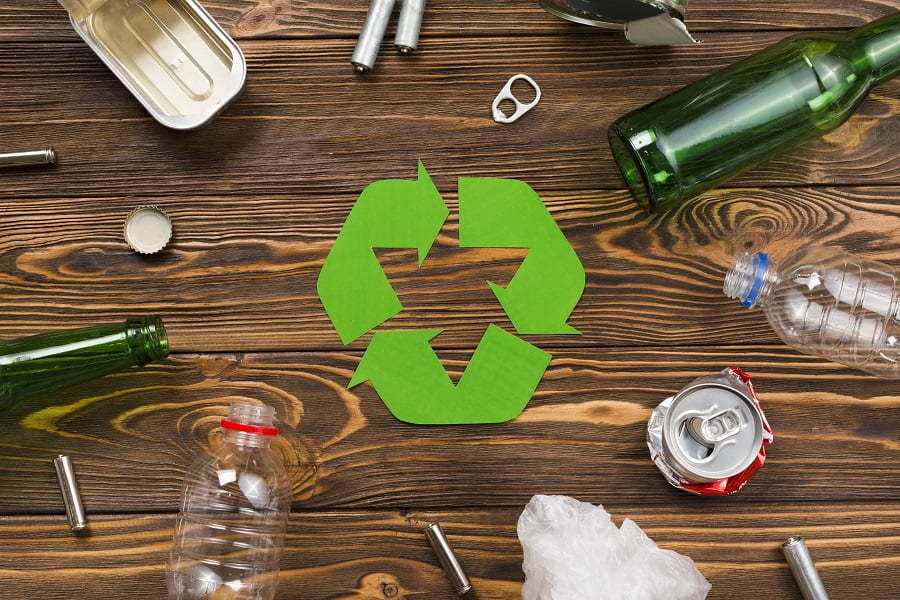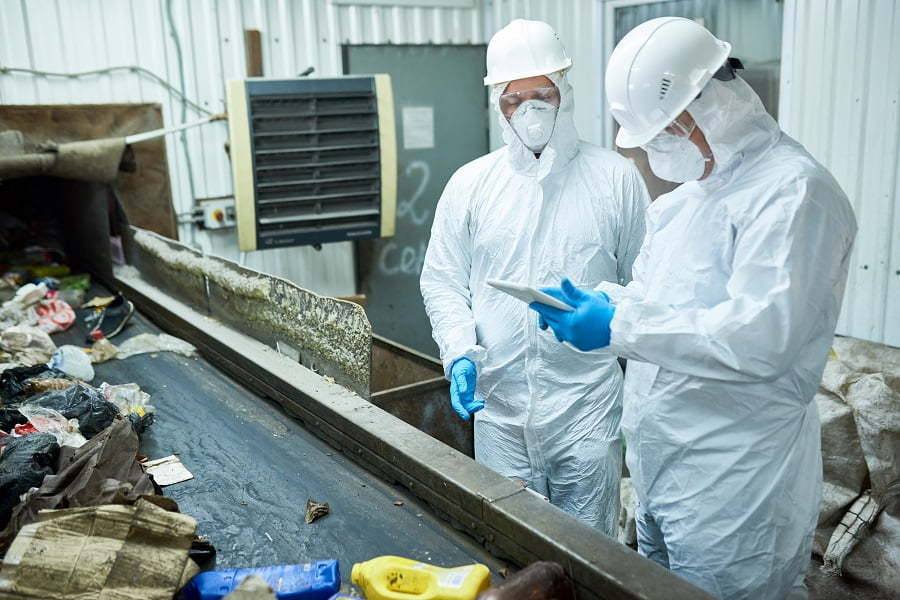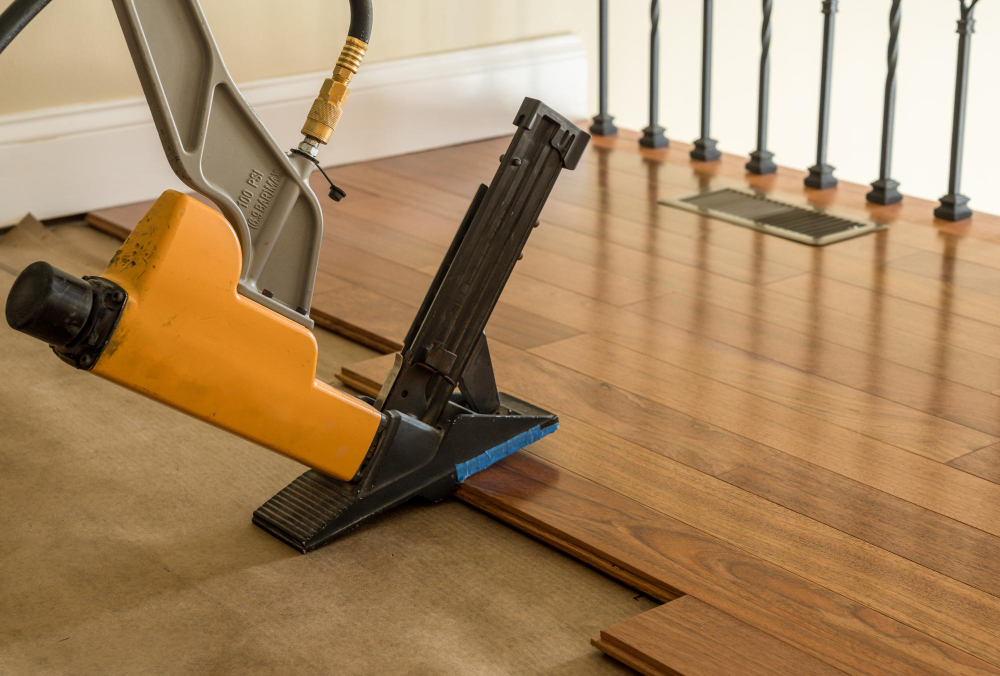Last updated on
Single-stream recycling doesn’t require you to do any sorting. All items are put into one bin and mixed in one collection truck. Here are the pros and cons. Read on!
Recycling seems like an easy job: take the item you’re done with and throw it in a labeled bin. But what if glass shatters or you forget to break down a huge carton box? In recent years, single-stream recycling has gained steady popularity in the country.
Many states call it ‘the future for responsible conservation’ and ‘a step towards the ultimate goal of building a Zero-Waste community.’ While there are many advantages of single-stream recycling, the conservation method has its disadvantages. Here is everything you need to know about single-stream recycling, including its pros and cons.
What is Single-stream Recycling?

Single-stream recycling doesn’t require one to do any sorting. All items to be recycled are put into one bin and mixed in one collection truck. The various materials are later sorted out at a recovery facility. Before single-stream recycling gained popularity, the most known recycling processes were the dual-stream and multiple-stream recycling methods.
In dual-stream recycling, all the materials are collected together, but garbage is kept separate from recyclable materials. The recyclable materials are later separated by type. The consumer must sort out their recyclable materials by sections, usually glass, paper, and general trash before they are taken to a recovery facility. For multiple-stream recycling, materials get separated at the collection points. There are separate bins for plastic, metal, paper, and fiber.
Acceptable Materials for Single-stream Recycling

While some areas place some limits on the type of materials you can put in single-stream recycling, the following are some of the acceptable materials:
- Paper and paper bags
- Clean containers and glass jars
- Cleaned out prescription drug bottles
- Cans
- Plastic bottles
- Clean aluminum foil
If you’re planning to adopt single-stream recycling, it is best to check with your city’s Public Works department so that they can tell you the type of materials that are recyclable in your region.
Sorting Process

Once the collection trucks get to the materials recovery facility, they are put on the floor, and machines and workers get to sorting them. Below is the full process that happens during single-stream recycling
- The recyclable items are unloaded from collection trucks and placed on conveyor belts where machines and employees sort the recyclable and non-recyclable materials.
- The recyclable materials get transferred to decks screens, and heavier items drop to the bottom, leaving lighter materials such as paper and cardboard.
- Heavier items are taken through a magnet to pull all metal items.
- The employees double-check to ascertain that the materials were sorted correctly.
- The light materials such as paper and newspapers are separated and sorted into separate containers.
- Once all the recyclable materials are placed into their respective bins, they are taken to a recycling facility for processing.
Is Single-stream Recycling Good or Bad?

It goes without saying that single-stream recycling offers consumers convenience that dual-stream recycling doesn’t accord them. The single-stream recycling process, however, isn’t perfect. Since employees are responsible for sorting the materials, some mistakes get made, and usually, the result is low-quality products. Below are some of the pros and cons of the recycling process.
Pros
- Encourages consumers to participate in recycling materials.
- Provides convenience to consumers as they don’t need to worry about separating the items by bins. Working with a single-stream recycling service will help you play your part in the environment while they take care of the rest.
- The efficient collection as collection trucks accepts all the items.
- Reduced garbage collection costs since there is less garbage to dispose of.
- Allows recovery facilities to process more items in a shorter time using technology.
- High diversion rates.
- Reduced littering since people don’t need to sort the trash themselves.
Cons
- High initial capital costs.
- A competitive disadvantage for smaller companies that are unable to provide the single-sort process.
- The process can confuse consumers and thus blur out the lines between recycling and garbage.
- High risk of contamination of recyclable materials at recovery facilities.
- High cost of recycling commingled items.
- It isn’t easy to recycle all items at once since some items, such as glass, breaks during the collection and sorting process.
- Low quality recycled materials due to mixed collection.
- Requires manual sorting.
- Residual recycled materials often end up in landfills.
- Small processors may find themselves unable to handle all the materials coming in.
How to Avoid Contamination During Single-stream Recycling

Below are some measures you can take to prevent contamination during single-stream recycling that will help you recycle right:
- Don’t dispose of food waste or drink and dishware in a single-stream recycling bin.
- Recycle every metal can, jug, and plastic bottle.
- Recycle clean and empty glass jars and bottles.
- Place glass bottle in a paper bag so that they don’t shutter everywhere.
- Get in touch with your county to determine whether you can dispose of batteries, prescription bottled, and shredded paper.
The Takeaway
Recycling is a good way to take part in eco-friendly matters. While it is almost a civic virtue to participate in recycling, the situation is far more complex. The facts about single-stream recycling vary from county to county. However, it is plausible to argue that if it is combined with other recycling methods, single-stream recycling will encourage people to recycle more.
Related reading:
Table of Contents





